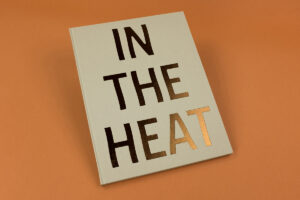YOUR CART
- No products in the cart.
Subtotal:
€ 0

Concept and photography:
Arturo Soto
Essay:
Kevin Coleman
Design:
Rob van Hoesel
Lithography:
Marc Gijzen
Print:
NPN Printers (NL)
Binding:
Van Waarden (NL)
Supported by:
St. Catherine’s College
University of Oxford
“[…] Throughout the year, thousands travel from Mexico, Costa Rica, and Colombia to go shopping in Panama’s megamalls, air-conditioned temples to commodity fetishism. Shoppers stroll through the arcades of conspicuous consumption, passing brilliant window displays of leading US and European chains – Cartier, Calvin Klein, the Gap, Swarovski, and Tommy Hilfiger Kids. After a day of shopping, visitors can retire to their hotels, often directly attached to the malls. But this is not the Panama City that you will get from Arturo Soto’s photographs.” (Kevin Coleman)
Panama’s presence in the collective unconscious is frequently limited to its famous canal, exotic sceneries and recent political history. In the book In the Heat, however, the vibrant country displayed in travel brochures is purposefully absent. Arturo Soto leaves out this typical imagery in which colour is used to promote prepackaged experiences.
In the Heat is a subjective depiction of Panama’s urban landscape. The banal spaces in the work of the Mexican photographer contradict conservative notions of progress and economic growth.
Even though the project is not meant as a social critique, it does attempt to capture the varying social values and disparities located in the urban environment. The title references Panama’s humid climate.
Includes an essay by Kevin Coleman (Assistant Professor of Latin American History, University of Toronto).
Arturo Soto is a Mexican photographer and writer interested in exploring the relationship between landscape and state of mind through sequences of images that capture the social values located in the urban environment but that also reflect his thoughts and desires. His artistic practice owes a great deal to the work of the French writer Georges Perec, whose fragmentary and often absurd projects offer a methodology for the study of the infraordinary, the term he coined to describe the nothingness that comprises the bulk of our lives. Perec highlighted the complexity of micro-events and banal spaces, exposing the partiality and selectivity of our attention and making us question why we grant significance to certain things while overlooking others. Perec’s writings provide a fitting analogy for documentary images, which give a realistic impression of the world while also connoting an authorial vision. Soto holds a PhD in Fine Art from the University of Oxford, an MFA in Photography from the School of Visual Arts in New York, and an MA in Art History from University College London.
“An urban landscape does create an interesting cultural portrait as the structures, sidewalks (if any), and roadways were man-built and are maintained by the hands of those living here. It is engaging to observe what Soto documented as what is deemed important or left to nature to dispose of; a strong indication of personal and societies cultural priorities. Soto’s thought-provoking visual investigation is poignant and poetic which allows us plenty of space for introspection.” (Douglas Stockdale)
“[...] people are fundamental to this work, though they are rarely seen. Almost everything in the pictures is the product of human intentions and actions, for good or for ill; Soto wants us to understand this, to see how the fabric of the city is a manifestation of those forces that would not necessarily be visible in any other way. It is this realisation that gives the pictures their critical edge.” (Patricia Karallis)